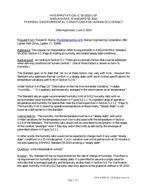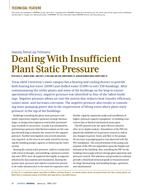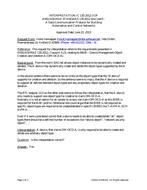Snow melting system design, as discussed in this paper, is restricted to the procedures published by ASHRAE and its predecessor societies, ASHVE and ASHAE. References are made to earlier work to establish that snow melting systems had been installed prior to the initial publication material on them in the 1953 edition of the ASHVE Guide. A conclusion stated in the final report of the recent ASHRAE research project 926 is: “Exhaustive study failed to identify an acceptable simplified approach [to design snow melting systems] for locations with limited meteorological data” (Ramsey et al. 1998). This paper will discuss that conclusion and show that four factors contribute to the total load. None of the four can be singled out as always being the controlling factor. Only the frequency analysis of the combined four loads is sufficient to determine the required thermal output of the system. Potential topics for research are discussed. The first would be to extend the list of cities to be considered. Additional U.S. cities should be studied, but also cities in Canada, Europe, and Asia should be studied. Thirteen Canadian locations have been considered, but the available data were not compatible with the data analyzed in RP-926. A second topic for research would be the means for relating inches of water equivalent to inches of snowfall. Design engineers have trouble explaining the significance of “water equivalent” to customers. Weather stations, however, have difficulty in accurately measuring snow depth. ASHRAE TC 4.2 and TC 6.1 may cooperate in a research project to relate the water equivalent to depth of fallen snow. A third topic for consideration is the use of maps to estimate snow melting loads. There are many areas in the U.S. and Canada that require snow melting systems but do not have official weather stations. Maps showing lines of equal loads may be of assistance to designers. This paper discusses the time period used for the basis of the frequency distributions of the meteorological data. Two separate sets of data have been used for these frequency analyses. Each set covers a decade of observations. There is reason to believe that longer periods should be used as a base for the frequency distributions.
Units: I-P
Citation: Symposium, ASHRAE Transactions, vol. 105, pt. 1
Product Details
- Published:
- 1999
- Number of Pages:
- 6
- File Size:
- 1 file , 880 KB
- Product Code(s):
- D-7618


